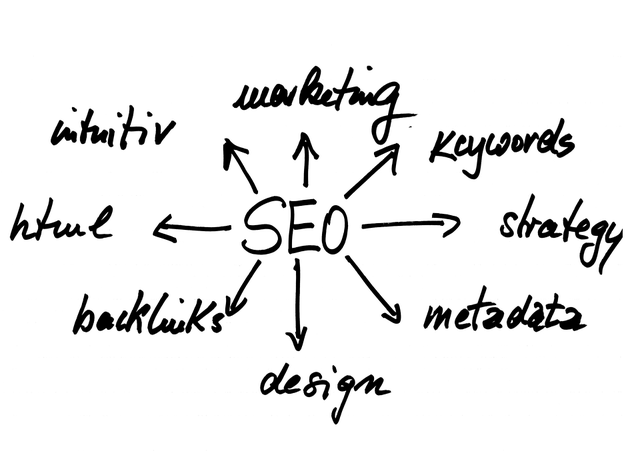We’ll increase conversions by
20-100+%
on your website.
Get a FREE Audit today
See how we can help your business increase conversion rates
A Comprehensive Guide to Conversion Rate Optimization

Are you struggling to turn website visitors into paying customers? Do you want to boost revenue and improve user experience on your website? Then it’s time for you to explore conversion rate optimization (CRO). In this blog post, we’ll define CRO, explain why it’s essential in digital marketing, and dive into the benefits of implementing it.
We’ll also share best practices, common mistakes to avoid, tools and technologies available for CRO, and real-life examples of successful CRO strategies. Don’t miss the opportunity to take your website to new heights – read on!
Understanding Conversion Rate Optimization (CRO)
Conversion Rate Optimization (CRO) improves a website’s or landing page’s performance, leading to increased conversions and revenue.
What is CRO?
Conversion Rate Optimization (CRO) is optimizing a website or landing page to increase the percentage of visitors who complete an action, such as making a purchase or filling out a form. It involves analyzing user behavior and data to develop strategies that will improve the overall conversion rate.
In simpler terms, CRO helps businesses get more value from their existing traffic by converting more site visitors into customers. This can be achieved through various techniques such as improving the design of call-to-action buttons or creating landing pages that are specifically tailored to certain demographics. Ultimately, CRO aims to enhance user experience while also driving business growth and revenue.
The Importance Of CRO In Digital Marketing

Conversion rate optimization (CRO) is essential in digital marketing because it can significantly increase revenue and improve user experience. Without CRO, businesses might miss out on valuable opportunities to convert visitors into customers. By optimizing conversion rates, businesses can see an enhanced return on investment (ROI).
In the highly competitive world of digital marketing, using effective CRO strategies are critical for success. By understanding your customer’s behavior through data analysis and testing, you can implement changes that will boost engagement and more conversions. Ultimately, CRO aims to increase profitability by converting website visitors into paying customers at a higher rate than before.
Benefits Of Conversion Rate Optimization
Conversion Rate Optimization (CRO) offers several benefits to businesses, including increased revenue, improved user experience, and enhanced ROI. Want to learn more about how CRO can transform your digital marketing strategy? Keep reading!
Increased Revenue
One of the most significant benefits of implementing a sound conversion rate optimization strategy is the potential for increased revenue. By converting more users into customers, businesses can boost their bottom line and generate greater profits.
CRO achieves this by optimizing the various elements on your website that impact user behavior, such as call-to-action buttons, landing pages, and overall user experience. These optimizations lead to higher engagement rates, longer sessions on your site, and ultimately more conversions – all of which positively impact your revenue numbers.
With improved data analysis and continuous testing and improvements, businesses can harness CRO to drive substantial growth in revenue without necessarily having to spend more on advertising or acquire net new customers or leads.
Improved User Experience
Improved user experience is one of the most significant benefits of conversion rate optimization. Optimizing your website and making it more user-friendly can enhance your visitors’ overall experience. This includes improving your website’s navigation, design, and functionality to make it easier for users to find what they are looking for.
By enhancing user experience through CRO techniques like smarter website design or simplified checkout processes, visitors tend to stay on your site longer, leading to higher engagement rates. In turn, this can lead to increased sales and revenue as satisfied customers will be more likely to return in the future.
Ultimately, by prioritizing a better user experience in your CRO strategy, you’ll reap benefits beyond just improved conversions by creating optimal digital experiences that help build customer loyalty over time.
Enhanced ROI
Enhanced ROI is an essential benefit of Conversion Rate Optimization (CRO). When you optimize your website, you will see improved conversion rates, which ultimately leads to increased revenue. By reducing friction points in the user journey and creating a better user experience, visitors are more likely to convert into customers.
This increased conversion rate means that each visitor is worth more to your business, resulting in a higher Return on Investment (ROI) for every marketing dollar spent.
Furthermore, CRO can help businesses cut down marketing expenses while achieving their revenue objectives. This involves targeting high-intent users who are most likely to yield conversions by utilizing data-driven insights obtained during using conversion rate optimization tools.
Overall, Enhanced ROI as a result of effective Conversion Rate Optimization usually positively impacts both short-term and long-term profitability for companies looking to grow their bottom line through digital channels.
Better Understanding Of Website Visitors Behavior

Conversion rate optimization can also help businesses better understand their customer’s behavior. By analyzing website data and user behavior, CRO experts can identify customer patterns and preferences, such as the type of content they engage with most of the products they spend more time browsing. This information is invaluable in developing targeted marketing strategies that resonate with customers on a deeper level.
Understanding customer behavior can also help optimize web design and functionality to improve overall user experience. By identifying pain points in the customer journey, businesses can address those issues to make it easier for users to navigate their website and complete desired actions. Ultimately, this leads to higher conversion rates and improved customer satisfaction.
Boosted Engagement
One major benefit of Conversion Rate Optimization (CRO) is boosted engagement. By optimizing your website for conversions, you’re able to create a more engaging experience for your users. This means that they’ll be more likely to spend time on your site, interact with your content and engage with your brand.
Boosted engagement is an essential component of CRO because it leads to increased brand recognition and loyalty. When visitors have a positive experience on your site, they’re more likely to come back in the future or even recommend you to their friends and family. Engaged users are also more willing to share their experiences on social media platforms – which can lead to an increase in traffic and conversions over time.
To boost engagement as part of your CRO strategy, consider implementing tactics such as improving page load times, simplifying navigation menus and enhancing the overall user experience design. By prioritizing enhanced engagement through these tactics, you’ll improve both the success of your website’s conversion rate goals and build long-lasting relationships with loyal customers.
The CRO Process

The CRO process involves analyzing website data, identifying areas for improvement, developing optimization strategies, implementing changes and continuously testing to improve user experience. If you want to learn more about how CRO can benefit your business, keep reading!
Conducting Website Data Analysis
Before implementing any conversion rate optimization (CRO) strategies, it’s crucial to thoroughly analyze your website’s data to understand how users interact with it. This analysis includes examining metrics such quantitative data such as bounce rates, session duration, click-through rates, and conversion rates.
By analyzing this data, you can identify areas of your website that need improvement and discover potential roadblocks that prevent users from converting. For example, if your bounce rate is high on a particular page or section of your website, there may be an issue with the design or content of checkout page that needs addressing.
Overall, conducting website data analysis is a fundamental step in creating effective CRO strategies and ensuring the success of your digital marketing efforts.
Identifying Areas For Improvement
To start with the CRO process, it is essential to identify areas on your website that need improvement. This can be achieved by conducting a thorough data analysis of your website’s traffic and user behavior. By doing so, you’ll gain insights into what pages or elements of your site are not performing well in converting visitors into leads or customers.
Once you have identified the areas for improvement, develop optimization strategies to tackle them. This could involve changing things like call-to-action buttons, landing pages, user experience design, or anything else that could improve your conversion rates. Implementing these changes and continuously testing and improving them will help ensure that conversions continue to increase over time.
Developing Optimization Strategies
Developing optimization strategies is a crucial step in the CRO process. Once areas of improvement have been identified during website data analysis, it’s time to develop an action plan. Optimization strategies can range from simple changes like tweaking copy or button placement to more complex ones like redesigning an entire landing page.
It’s essential to keep in mind that optimization should focus on improving user experience and meeting customer needs rather than just boosting conversions. This requires understanding your target audience and tailoring your optimization strategies accordingly.
By continuously testing and refining these strategies, you’ll be able to achieve the desired results while ensuring a positive experience for users.
Implementing Changes
After identifying areas for improvement, the next step in conversion rate optimization (CRO) is implementing changes. This involves developing strategies that address the identified issues and making necessary improvements to your website. Ensuring these changes align with your business objectives and enhance user experience is critical.
You can either execute these changes yourself or hire a CRO agency to do it for you. The implementation phase can include modifying site designs, headlines, calls-to-action buttons, fonts, colors schemes pricing page name, and copywriting. These modifications are informed by data-driven insights from your analytics tools, allowing you to evaluate results accurately over time.
Key Elements Of CRO

The key elements of CRO include call-to-action buttons, a landing page, A/B testing, user experience design, and analytics and tracking.
Call-to-Action Buttons
One of the key elements of conversion rate optimization is call-to-action buttons. These are usually simple phrases or commands that encourage users to take a desired action, such as “Buy Now” or “Sign Up Today.” The design and placement of these buttons on a website can significantly impact the overall conversion rate.
To optimize call-to-action buttons, it’s important to consider factors such as color, size, font style, and placement on the page. A high-contrast color that stands out from the rest of the webpage can draw attention to the button, while using action-oriented language in the button text can inspire users to click through. By testing and refining these elements over time, businesses can increase their chances of converting more visitors into customers.
Landing Pages
A landing page is an essential aspect of conversion rate optimization. These web pages are designed to capture visitors’ information by providing them with relevant and valuable content that entices them to act. A well-designed landing page will keep the user engaged and encourage them to convert, whether it be through signing up for a newsletter, purchasing a product or service, or filling out a contact form.
One crucial element of a landing page is its visual appeal. A clean and uncluttered design can increase engagement and improve conversion rates significantly. High-quality images, compelling headlines, and clear calls to action also play an integral role in driving conversions. Additionally, ensuring that your landing page is mobile-responsive is critical since more than half of all website traffic now comes from mobile devices.
A/B Testing
A/B testing is a key element in conversion rate optimization (CRO) that involves comparing two versions of a webpage or app to determine which one performs better. The process entails randomly dividing the traffic between the two versions and collecting data on user behavior, such as click-through rates, bounce rates, and conversions. By analyzing this data, marketers can identify areas for improvement and make informed decisions about what changes to implement.
One effective way to conduct A/B testing is through multivariate testing, where several variations are tested at once. This approach saves time and resources while allowing for more granular analysis of user behavior.
A successful A/B test should result in improved metrics for the winning variation compared to the original version. Overall, implementing A/B testing as part of CRO can lead to significant revenue and user engagement gains by optimizing digital experiences based on user feedback.
User Experience Design
User Experience Design is vital to Conversion Rate Optimization (CRO). To increase the chances of conversion, it’s essential to provide users with an exceptional experience throughout their interaction with your website.
User Experience Design involves understanding the user’s behavior, preferences and needs to optimize their journey toward their conversion goals.
One key aspect of User Experience Design is creating clear and concise navigation on your website. Visitor should be able to easily find what they are looking for without feeling lost or confused. Additionally, visually appealing design elements like images or videos can help engage users and keep them on your site longer. Ultimately, creating an enjoyable user experience will help increase conversions and drive business success.
Analytics And Tracking
Analytics and tracking are crucial elements of conversion rate optimization (CRO) as it allows marketers to measure the effectiveness of their optimization efforts. By analyzing website traffic and user behavior, businesses gain insights into how visitors interact with their site. This data can then be used to identify improvement areas and develop effective CRO strategies.
One key aspect of analytics in CRO is understanding metrics such as bounce rates, click-through rates, and conversion rates. These metrics provide valuable information on whether your website engages users effectively. Tracking tools like Google Analytics help in identifying trends over time, which can reveal patterns in user behavior that may require attention from a CRO standpoint.
In conclusion, analytics and tracking are essential components of successful CRO campaigns. They allow businesses to make informed decisions based on real-time data about their customers’ interactions with their site. By using these insights to inform testing and optimizing strategies, companies can improve not just their conversion rates but also overall customer experience on the website leading to increased revenue growth opportunities
Best Practices For CRO

To ensure successful conversion rate optimization, it is crucial to define clear goals and objectives, analyze user behavior, use data-driven insights, get qualitative data, and continuously test and improve, emphasizing simplicity.
Defining Goals And Objectives
Defining clear goals and objectives is one of the most critical elements in any conversion rate optimization process. Without a clear understanding of what you want to achieve, it can be difficult to develop effective conversion rate optimization strategies and measure success. Defining your goals should be specific, measurable, attainable, relevant, and time-bound (SMART).
Your objectives should also align with your company’s overall business strategy. For example, if your primary goal is to increase revenue by optimizing your website’s conversion rates, your objective could be to generate 20% more leads within the next six months. By setting SMART goals and objectives that support your business strategy, you set yourself up for long-term success in improving conversions and achieving more significant ROI.
Analyzing User Behavior
Analyzing user behavior is a crucial part of conversion rate optimization. By examining how users interact with your website, you can identify areas where they might be getting stuck or losing interest. This allows you to make targeted changes that can improve the overall user experience and increase conversions.
One way to analyze user behavior is through heat mapping tools, which visually represent where users click on your site. By analyzing these maps, you can see if some aspects, like buttons or links, are being ignored or if users struggle to find what they’re looking for. This information can then be used to make adjustments and improve the flow of your site.
Utilizing Data-Driven Insights
Data-driven insights are an essential component of conversion rate optimization (CRO). By analyzing user behavior and website data, CRO experts can identify areas for improvement and develop strategies that drive conversions. Data-driven insights provide valuable information about how visitors interact with a website, including which pages they visit, where they spend the most time, and what actions they take before leaving.
To effectively utilize data-driven insights in CRO, businesses must have access to reliable analytics tools. These tools allow CRO experts to track key metrics such as bounce rates and a site’s conversion rate over time. With this information at their disposal, businesses can make informed decisions about which elements on their websites need improvement and develop targeted strategies to improve overall performance. Ultimately, utilizing data-driven insights is crucial for businesses looking to optimize their websites for maximum impact and increased revenue.
Continuous Testing And Improving
One of the key elements in Conversion Rate Optimization (CRO) is continuous testing and improvement. This means that businesses need to constantly monitor their website analytics and user behavior, identify areas for improvement, and implement changes accordingly. CRO is not a one-time fix but an ongoing process of refining and optimizing.
By continuously testing and improving, businesses can gain insights into customer behavior patterns, such as which pages have high bounce rates or where users tend to drop off during checkout. By understanding these patterns, businesses can make data-driven decisions that improve user experience and increase conversions. In conclusion, continuous testing and improvement should be fundamental to any CRO strategy.
Common CRO Mistakes To Avoid
Avoid focusing too much on conversions, neglecting data analysis or overcomplicating the process. Learn about these common conversion rate optimization mistakes and more in our blog. Read on to optimize your website and boost your revenue!
Focusing Too Much On Conversions
Focusing solely on conversions can be a common mistake in CRO. While increasing conversions is the end goal, it’s important not to sacrifice the overall user experience for the sake of numbers. Overly aggressive tactics or pop-ups may increase conversion rates in the short term, but they can also lead to negative perception and decreased engagement with your brand.
Instead of just focusing on conversions as a metric, consider measuring other essential aspects such as bounce rate, time spent on page, and click-through rates. Improving these metrics can lead to increased customer satisfaction and retention in addition to boosting a site’s conversion rates. A well-rounded approach that balances both qualities of user experience and quantity of conversions will ultimately produce better results in the long run.
Lack Of Data Analysis
One of the most common mistakes in implementing conversion rate optimization (CRO) strategies is the lack of data analysis. Many businesses fail to realize that optimizing a site’s conversion rate is not a one-size-fits-all process but requires careful analysis of customer behavior on their website. Without proper data analysis, it becomes difficult to identify areas that need improvement, which eventually leads to ineffective results.
Data-driven insights are crucial in developing effective website conversion rate strategies that yield positive results. With proper data analysis, businesses can discover what works and what does not work on their website and make informed decisions about optimization efforts.
Therefore, companies must prioritize data collection as part of their conversion rate process by utilizing tools such as Google Analytics or other heat mapping software to better understand user behavior.
Overcomplicating The Process
One common mistake businesses make regarding conversion rate optimization is overcomplicating the process. This can happen for several reasons, including trying to implement too many changes at once or not clearly understanding what needs to be improved. When this happens, companies may become overwhelmed and find themselves unable to execute on their conversion rate strategies effectively.
To avoid overcomplicating the process, it’s important for businesses to start with a clear plan in mind. Goals and objectives should be clearly defined, and data analysis should be conducted to identify areas for improvement. From there, optimization strategies that are focused and targeted toward specific goals can be developed. Companies will improve their chances of success with your conversion rate by keeping things simple and focused.
Tools And Technologies For CRO

Key tools and technologies for successful conversion rate optimization include Google Analytics, heat mapping tools, A/B testing software, user testing platforms, and conversion rate agencies.
Want to learn more about how these tools can help boost your website’s performance?
Keep reading!
Google Analytics
Google Analytics is a powerful tool for optimizing their website’s conversion rate. It allows you to track user behavior from when they land on your site to when they exit. With Google Analytics, you can measure everything from page views and bounce rates to user demographics and traffic sources.
One of the key benefits of using Google Analytics for conversion rate optimization is that it provides valuable insights into user behavior. By analyzing this data, you can identify which pages perform well and where users drop off. This information can then be used to make strategic changes to improve your conversion rate, such as updating web copy or redesigning your landing page. Overall, utilizing Google Analytics as part of your conversion rate strategy is essential for driving results and ensuring long-term success.
Heat Mapping Tools
Heat mapping tools are essential for any business seeking to optimize its website conversion rates. These tools help you gain insights into how your visitors interact with various pages on your website. With heat mapping, you can identify which areas of your site draw the most attention and which parts need improvement.
Heat maps show where users click on a page, scroll behavior, and where spend more time. This information is valuable in identifying problem areas on a page that may be causing high bounce rates or low engagement levels. It helps businesses create practice tests and optimization strategies that target specific user behaviors to improve conversions over time.
Overall, heat mapping is an essential tool in helping companies to understand their audience better to provide them with better online experiences.
A/B Testing Software
A/B testing software is an essential tool for conversion optimization. This software enables marketers to test two or more versions of a webpage, each with different elements such as headlines, images, and call-to-action buttons. By comparing the results of these tests, you can learn which version performs better at converting website visitors into customers.
There are many A/B testing tools available in the market today, such as Optimizely and VWO. These tools make it easy for anyone to run experiments on their website without coding knowledge. They also provide detailed reports that help you understand which version of your page performed better and why allowing you to optimize your site based on data rather than guesswork. With A/B testing software in your toolkit, you can boost conversions and take your digital marketing efforts to the next level.
User Testing Platforms
User testing platforms are essential tools for conversion optimization. These platforms allow digital marketers to observe and analyze how users interact with their websites or projects. User testing can provide valuable insights into customer behavior, pain points, and preferences that can inform CRO strategies.
Some popular user testing platforms include UsabilityHub, UserTesting.com, and Optimal Workshop. Using these tools allows website owners to conduct remote usability tests, gather real user feedback, and generate data-driven insights about the effectiveness of their website design and layout. With this information at hand, businesses can make informed decisions on how best to optimize their site for maximum conversions.
CRO Agencies
CRO agencies are companies that specialize in providing conversion optimization services. These agencies have the necessary expertise and experience to help businesses optimize their websites for higher conversions. They typically work with clients across a wide range of industries, including e-commerce, SaaS, and B2B.
One of the primary benefits of working with a CRO agency is that they can help businesses save time and resources by taking charge of the entire optimization process. From data analysis to testing and implementation, these agencies have a structured approach to improve website performance systematically. Additionally, CRO agencies often provide ongoing support and maintenance to ensure continued success after the initial optimization.
Implementing CRO Strategies
Learn about real-life examples of successful CRO strategies and get tips for executing your own successful CRO campaigns. Don’t miss out on the opportunity to improve your website’s conversion rates!
Real-Life Examples Of Successful CRO Strategies
One real-life example of a successful CRO strategy is Dropbox’s referral program. By offering existing users storage space in exchange for referring new users, Dropbox increased its user base from 100,000 to 4 million in just 15 months. The company saw a boost in revenue and engagement, with over 35% of daily signups coming from referrals.
Another example is HubSpot’s use of A/B testing on its landing page. Testing different elements such as headlines, images, and call-to-action buttons improved their conversion rates by up to 115%. This led to increased leads and helped them better understand their target audience and tailor their content accordingly.
Overall, these examples show the power of CRO when implemented correctly. Businesses can improve conversion rates and drive more revenue by analyzing data and continuously testing strategies.
Tips For Executing a Successful CRO

Successful conversion optimization (CRO) requires a detailed and data-driven approach. To begin your conversion funnel, clearly define your goals and objectives, as this will determine your target audience.
Next, analyze user behavior through website data analysis and identify areas of web page that need optimization.
Using data insights from the analysis process, develop an actionable strategy incorporating call-to-action buttons, a landing page, A/B testing, user experience design, analytics and tracking tools. Implement changes methodically while monitoring performance through continuous testing and improvement to maintain optimal results.
To further ensure success in executing CRO strategies, don’t focus too much on conversions alone but strive to balance conversion metrics and overall business objectives. Remember to avoid overcomplicating the process by keeping it simple yet effective with clear communication channels established across teams implementing the strategies.
In conclusion, conversion optimization (CRO) is a vital process in digital marketing that helps businesses increase revenue, enhance user experience, boost engagement, and achieve better ROI. Analyzing website data, identifying areas for improvement, developing optimization strategies, and implementing changes using key elements such as call-to-action buttons and landing pages through A/B testing and user experience design.
Succeeding with CRO requires best practices like setting goals/objectives based on user behavior analysis while utilizing data-driven insights to test strategies for continuous improvement constantly.
Avoiding common mistakes such as focusing too much on conversions or overlooking critical data analysis can lead to successfully implementing an effective CRO strategy aided by Google Analytics or other tools, including conversion rate agencies. Committing resources towards adopting successful conversion rate strategies can produce tremendous returns for your business!

Frequently Asked Questions
1. What exactly is conversion optimization?
Conversion rate optimization (CRO) refers to improving a website or landing page’s ability to convert website visitors into customers or from potential customers into leads. This involves analyzing user behavior, identifying areas for improvement, and implementing changes that increase the likelihood of users taking a desired action.
2. Why is CRO important for my business?
CRO can significantly boost your business’s bottom line by increasing conversions and revenue without having to spend more money on advertising or marketing. Optimizing your website or landing pages can give users a better experience and encourage them to take action, leading to higher ROI.
3. What are some key metrics used in measuring CRO success?
The most common metrics used in measuring ecommerce site CRO success include click-through rates (CTR), bounce rates, time on site/page, conversion rates, and average order value (AOV). By monitoring these metrics over time and making continuous improvements based upon results obtained allows businesses an ongoing basis towards better returns from their online efforts.
4. How can I get started with CRO for my website?
To get started with CRO for your website, begin by conducting a comprehensive evaluation of the existing user experience, including aspects such as load speed optimization; identifying high-traffic pages & search engine top terms; performing A/B testing campaigns when experimenting with different versions variables, each targeting specific segments/behaviors among visitors who interact online – all while keeping track via analytics focusing on what influences overall conversion rates within particular target demographics(s) so adjustments may be made where appropriate ultimately driving sales forward over more extended periods across multiple channels simultaneously leveraging this strategy together along other omnichannel tactics tailored specifically around objectives at hand!








